- Home
- Bill Bryson
Seeing Further
Seeing Further Read online
EDITED & INTRODUCED BY
BILL BRYSON
CONTRIBUTING EDITOR JON TURNEY
SEEING
FURTHER
THE STORY OF SCIENCE,
DISCOVERY, AND THE GENIUS
OF THE ROYAL SOCIETY
CONTENTS
Cover
Title Page
CONTENTS
BILL BRYSON
1 JAMES GLEICK
2 MARGARET ATWOOD
3 MARGARET WERTHEIM
4 NEAL STEPHENSON
5 REBECCA NEWBERGER GOLDSTEIN
6 SIMON SCHAFFER
7 RICHARD HOLMES
8 RICHARD FORTEY
9 RICHARD DAWKINS
10 HENRY PETROSKI
11 GEORGINA FERRY
12 STEVE JONES
13 PHILIP BALL
14 PAUL DAVIES
15 IAN STEWART
16 JOHN D.BARROW
17 OLIVER MORTON
18 MAGGIE GEE
19 STEPHEN H. SCHNEIDER
20 GREGORY BENFORD
EPILOGUE
INDEX
ACKNOWLEDGMENTS
MARTIN REES
FURTHER READING
LIST OF ILLUSTRATIONS
ALSO BY BILL BRYSON
Copyright
About the Publisher
BILL BRYSON
INTRODUCTION
Bill Bryson is the internationally bestselling author of The Lost Continent, Mother Tongue, Neither Here Nor There, Made in America, Notes from a Small Island, A Walk in the Woods, Notes from a Big Country, Down Under, The Life and Times of the Thunderbolt Kid and A Short History of Nearly Everything, which was shortlisted for the Samuel Johnson Prize, won the Aventis Prize for Science Books in 2004, and was awarded the Descartes Science Communication Prize in 2005.
I CAN TELL YOU AT ONCE THAT MY FAVOURITE FELLOW OF THE ROYAL SOCIETY WAS THE REVEREND THOMAS BAYES, FROM TUNBRIDGE WELLS IN KENT, WHO LIVED FROM ABOUT 1701 TO 1761. HE WAS BY ALL ACCOUNTS A HOPELESS PREACHER, BUT A BRILLIANT MATHEMATICIAN. AT SOME POINT – IT IS NOT CERTAIN WHEN – HE DEVISED THE COMPLEX MATHEMATICAL EQUATION THAT HAS COME TO BE KNOWN AS THE BAYES THEOREM, WHICH LOOKS LIKE TH IS:
People who understand the formula can use it to work out various probability distributions – or inverse probabilities, as they are sometimes called. It is a way of arriving at statistical likelihoods based on partial information. The remarkable feature of Bayes’ theorem is that it had no practical applications in his own lifetime. Although simple cases yield simple sums, most uses demand serious computational power to do the volume of calculations. So in Bayes’ day it was simply an interesting but largely pointless exercise.
Bayes evidently thought so little of his theorem that he didn’t bother to publish it. It was a friend who sent it to the Royal Society in London in 1763, two years after Bayes’ death, where it was published in the Society’s Philosophical Transactions with the modest title of ‘An Essay Towards Solving a Problem in the Doctrine of Chances’. In fact, it was a milestone in the history of mathematics. Today, with the aid of supercomputers, Bayes’ theorem is used routinely in the modelling of climate change and weather forecasting generally, in interpreting radiocarbon dates, in social policy, astrophysics, stock market analysis, and wherever else probability is a problem. And its discoverer is remembered today simply because nearly 250 years ago someone at the Royal Society decided it was worth preserving his work, just in case.
The Royal Society has been doing interesting and heroic things like this since 1660 when it was founded, one damp weeknight in late November, by a dozen men who had gathered in rooms at Gresham College in London to hear Christopher Wren, twenty-eight years old and not yet generally famous, give a lecture on astronomy. It seemed to them a good idea to form a Society – that is all they called it at first – to assist and promote the accumulation of useful knowledge.
Nobody had ever done anything quite like this before, or would ever do it half as well again. The Royal Society (it became royal with the granting of a charter by Charles II in 1662) invented scientific publishing and peer review. It made English the primary language of scientific discourse, in place of Latin. It systematised experimentation. It promoted – indeed, insisted upon – clarity of expression in place of high-flown rhetoric. It brought together the best thinking from all over the world. It created modern science.
Nothing, it seems, was beneath its attention. Society members took an early interest in microscopy, woodland management, architectural load bearing, the behaviour of gases, the development of the pocket watch, the thermal expansion of glass. Before most people had ever tasted a potato, the Royal Society debated the practicality of making it a staple crop in Ireland (ironically, as a hedge against famine). Two years after its formation, Christopher Merret, one of the founding Fellows, demonstrated a method for fermenting wine twice over, endowing it with a pleasing effervescence. He had, in short, invented champagne. The next year John Aubrey contributed a paper on the ancient stone monuments at Avebury, and so effectively created archaeology. John Locke contributed a paper on the poisonous fish of the Bahamas. And so it went on, decade after productive decade. When Benjamin Franklin flew his kite in a thunderstorm it was for the Royal Society that he very nearly killed himself. When a gas holder in Woolwich exploded with devastating consequences or gunpowder repeatedly failed to ignite or the navy needed a cure for scurvy, the Royal Society was called in to advise.
At least three things have always set the Society apart. First, from the outset, it was truly international. In 1665, Henry Oldenburg, himself German born, became editor of the Society’s first journal (now one of seven), which was given the full and satisfying name Philosophical Transactions: Giving some Accompt of the Present Undertakings, Studies and Labours of the Ingenious in many Considerable Parts of the World. No words from the Society’s early annals have more significance than that phrase ‘many Considerable Parts of the World’.
‘The international aspect was clearly a central part of what made it a success so early,’ says Stephen Cox, the Society’s genial chief executive. ‘Right from the start we were getting papers from people like Marcello Malpighi and Christiaan Huygens, so very early on it had become a place where ideas from all over could be exchanged – a kind of early version of the Internet really.’ As Cox likes to note, the Royal Society had a foreign secretary a hundred years before the British government did.
In an age when sabres hardly ever ceased rattling, the Society became the least nationalistic of national institutions. The name itself is telling. Royal Society of London describes a location, not an allegiance. Had it been the Royal Society of Great Britain it would have been a very different organisation whether it wished it or not. So throughout its history it has been the most admirably neutral and cosmopolitan of entities. When Benjamin Franklin was a voice of revolution against Great Britain, he was still an esteemed and welcome member of the Society; and when Captain James Cook circumnavigated the globe in British ships in the name of knowledge he did so with perfect assurances that he would not be molested by any American vessels he encountered. During the Napoleonic wars, Humphry Davy was able to travel on scientific business across Europe thanks to a letter of dispensation from Napoleon that he carried in his pocket. The Société Philomathique gave him a dinner in Paris and drank the health of the Royal Society, if not the king. In like spirit, the Society refused to expel Fellows from enemy nations during either of the world wars, and was one of the first bodies to re-establish links after them.
Quite as remarkable as its cosmopolitanism was a second distinctive characteristic of the Royal Society – namely, that it wasn’t necessary to be well born to be part of it. Having wealth and title didn’t hurt, of course, but being scientifically
conscientious and experimentally clever were far more important. No one better illustrated this than a retiring linen draper from Delft named Antoni van Leeuwenhoek. Over a period of fifty years – a period that began when he was already past forty – Leeuwenhoek submitted some two hundred papers to the Royal Society, all accompanied by the most excellent and exacting drawings, of the things he found by looking through his hand-wrought microscopes. These were tiny wooden paddles with a little bubble of glass embedded in them. How he managed to work them is something of a wonder even now, but he achieved magnifications of up to 275 times and discovered the most incredible things: protozoa, bacteria and other wriggling life where no life was thought to be. The idea that there were whole worlds in a drop of fluid was a positive astonishment.
Leeuwenhoek had practically no education. He filed his reports in Low Dutch because he had no English and no Latin. He didn’t even have High Dutch, it appears. But none of that mattered. What mattered was that he had a genius for microscopy and a profound respect for knowledge.
In 350 years, the Royal Society has had a mere 8,200 members, but what a roll call of names. In no very particular order they include Isaac Newton, Christopher Wren, Edmond Halley, Robert Boyle, Robert Hooke, Benjamin Franklin, John Locke, Humphry Davy, Charles Darwin, Ernest Rutherford, Isambard Kingdom Brunel, Joseph Banks, T.H. Huxley, James Watt, Joseph Lister, Henry Cavendish, Michael Faraday, James Clerk Maxwell, Lawrence Bragg, Paul Dirac, Peter Medawar, Alexander Fleming, James Chadwick, Lord Rayleigh, William Ramsey, Lord Kelvin, Kathleen Lonsdale, Dorothy Hodgkin, Miriam Rothschild, Anne McLaren and literally hundreds more who changed the world by changing our understanding of it. To be part of such an establishment is an extraordinary achievement. This isn’t just the most venerable learned society in the world, it is the finest club.
Throughout its busy history, the Society has demonstrated an almost uncanny knack for selecting people before they gave any particular hint of the greatness that would make them immortal. Edmond Halley was made a Fellow before he received his degree from Oxford. Charles Darwin, elected in 1839 only three years after his youthful Beagle voyage, was not even known for his work on barnacles, much less on evolution. William Henry Fox Talbot became an FRS a good two years before the first vague notion of photography flitted through his head. And of course there was Thomas Bayes, scribbling a theorem that the world would have to wait nearly 250 years to use.
The Society has also demonstrated a heroic, and indeed endearing, tendency to recognise the unsung. The example that leaps to mind for me here is that of Hermann Sprengel, the forgotten father of electric lighting. Everyone thanks Joseph Swan and Thomas Edison for giving us the homely glow of incandescent lighting, but in fact Sir William Grove (who, it more or less goes without saying, was himself a Fellow) had demonstrated a working incandescent bulb well over thirty years before them – seven years before Edison was even born. It’s just that Grove’s bulb didn’t last very long. What was needed was a vacuum that would allow a filament to burn for long periods. Sprengel, a German chemist working in London, invented a pump that could drain the air from a glass chamber down to one-millionth of its normal volume, allowing filaments to burn for hours and making electric lighting a commercial possibility at last. Edison and Swan found the filaments and got the glory. Sprengel was forgotten almost at once by everyone except the Royal Society, which made him a Fellow in 1878, nearly fifteen years before he was recognised by any institution in his native Germany.
The best place I know to get some sense of what the Royal Society is and has achieved is a modest, crowded storeroom in the basement of its headquarters in Carlton House Terrace in London. Here, neatly shelved or tucked into drawers and cabinets, are three and a half centuries of accumulated treasures – Newton’s manuscript copy of the Principia, the Shelton Regulator clock used by Captain Cook to time the transit of Venus on the Endeavour voyage, Joseph Priestley’s folding spectacles, Leeuwenhoek’s precious drawings, the papers of Robert Hooke and Robert Boyle – representing the moments of birth of some of the most enormous ideas human minds have ever had.
Keith Moore, the Society’s librarian, reaches into an anonymous-looking metal cupboard and, with an air of gentleness and care, brings out a white box. Inside it, resting delicately, is an object that automatically provokes an awed hush: the death mask of Isaac Newton. Only by a remarkable chance did the mask come into the Society’s possession. It had been lost for many years when, in 1839, a Mr Christie, a Fellow of the Society, developed a sudden desire to have a bust of Newton on his shelves and called in at a curio shop on Tichborne Street in London, near his place of work, to ask if they had anything. The shopkeeper replied that he had no statues, but they had a curious mask, which his father had bought many years before. After some rooting around, he found it and brought it to Christie to examine. It was Newton’s death mask. It had sat unregarded on a shelf for at least half a century, and in all likelihood would eventually have been lost altogether had Christie not made his lucky enquiry.
The mask is a transfixing object, not surprisingly, but what is more unexpectedly moving is a small, exquisite piece of apparatus that sits on the shelf alongside it: a reflecting telescope made by Newton himself in 1669. It is only six inches long but beautifully fashioned. Newton ground the glass himself, designed the swivelling socket, turned the wood with his own hand. In its time this was an absolute technological marvel, but it is also a thing of lustrous beauty. Nowhere could you find an item that more vividly demonstrates the beauty as well as the wonder of science.
Keith shows me some papers he has just been cataloguing. They are letters from Thomas Thorpe, an English chemist, written to his wife, Emma, during an 1878 Royal Society expedition to the American west. The purpose of the expedition was to view a solar eclipse, which, among other things, would allow them to confirm or disprove the existence of the planet Vulcan. The papers are irresistibly absorbing, partly because Thorpe brings a scientist’s curiosity to everything he sees – the quality of US trout, the character of the town of Cheyenne (home of ‘6,000 of the biggest scoundrels the world contains’), the climate, geology, everything – but also because they so vividly and charmingly catalogue the difficulties and discomforts necessary to do science in the field in the nineteenth century (or possibly any time).
When you look along the stacks or peek into the drawers, it is impossible not to be struck with wonder at how much aggregated human effort – how much thought and toil and nights under canvas – is embedded in what we know about the world and universe and how they are put together.
‘This is only a small part of it,’ Keith tells me. ‘There are eight thousand more boxes in storage in Wiltshire.’ He smiles. ‘You generate a lot of material in 350 years.’
Which brings me to my third remarkable fact about the Royal Society: it’s still there. More than that, it is still there and it is still important. How many enterprises can you name that are still doing today what they were formed to do 350 years ago?
It has had its moments of faltering, goodness knows. At times its quenchless curiosity has threatened to give way to mere morbidity. In the early days it was particularly fascinated with monstrous births and that kind of thing, and sometimes it engaged in experiments that were patently imprudent.
One such was in November 1667 when a penurious student named Arthur Coga was induced to let two Fellows transfuse sheep’s blood into him in return for the payment of a guinea. No one had any idea what would happen – whether it would kill him or fill him with boundless energy – and this degree of uncertainty left some of the more reflective members feeling distinctly uneasy. In the event, the transfusion didn’t do much of anything. Before an audience that included the Bishop of Salisbury, 14 ounces of blood were pumped out of the sheep and into Coga. It seemed to do him no harm. Afterwards, one of those present reported, ‘the patient was well and merry, and drank a glass or two of canary, and took a pipe of tobacco’. He went home, slept well and reported no ill effects. J
ust under two weeks later, the operation was repeated for a new audience. Soon afterwards, however, reports began to trickle in from all over Europe that the experiment had been tried several times elsewhere, often with fatal results. The Society, happily, never tried anything like that again.
If the Royal Society had done nothing after Newton, its fame would be secure. In fact, there were times when it looked as if it might not do much. Twenty years after Newton’s reign, it had a president, Martin Folkes, who was famous for slumbering through meetings, and financial difficulties that threatened to become insoluble. By 1740, barely half the Fellows could be counted on to pay their dues, and some were so severely in arrears that the Society’s accumulated deficit had risen to over £1,800 – a worrying sum for a private body of modest size. Partly to restore the balance sheet, it began taking in members who were distinguished but not terribly scientific. By the end of the century, Fellows included Edward Gibbon, Warren Hastings and even Lord Byron. Without actually ceasing to be worthy, it could easily have declined into something more peripheral and much less important.
Clearly that didn’t happen. At every critical moment throughout its history there has always been an Isaac Newton, a Joseph Banks, a Humphry Davy, a T.H. Huxley, a Lord Rutherford to give the Society clout and lustre, and to keep it firmly attached to scientific endeavour at the highest level.
Today the Royal Society’s interests remain an inspiration to recite. It provides 350 research fellowships and its grants support the work of 3,000 scientists all over the world. It bestows great numbers of medals and prizes, maintains an active programme of lectures and debates, and holds a beloved Summer Science Exhibition, which no one who appreciates science and can get to London should miss. It acts as the scientific conscience of the nation. It publishes seven journals, and an endless stream of papers. It remains emphatically international in its outlook, maintaining close links with ninety-one science academies around the world. If we have an Earth worth living on a hundred years from now, the Royal Society will be one of the organisations our grandchildren will wish to thank.

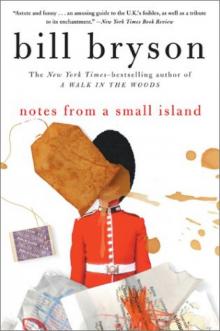 Notes from a Small Island
Notes from a Small Island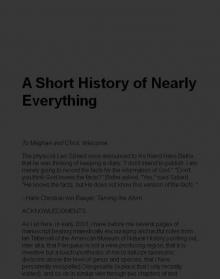 A Short History of Nearly Everything
A Short History of Nearly Everything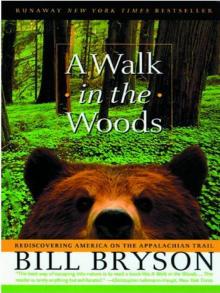 A Walk in the Woods
A Walk in the Woods I'm a Stranger Here Myself
I'm a Stranger Here Myself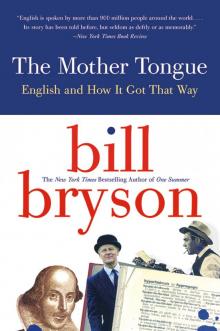 The Mother Tongue
The Mother Tongue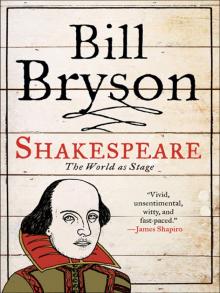 Shakespeare
Shakespeare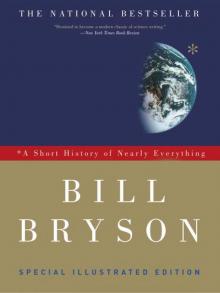 A Short History of Nearly Everything: Special Illustrated Edition
A Short History of Nearly Everything: Special Illustrated Edition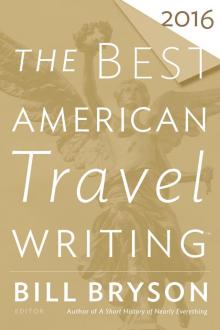 The Best American Travel Writing 2016
The Best American Travel Writing 2016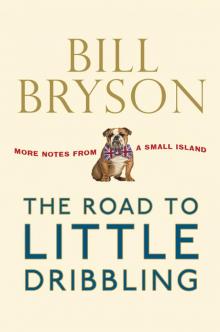 The Road to Little Dribbling
The Road to Little Dribbling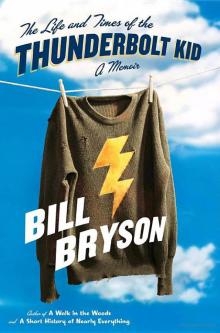 The Life And Times Of The Thunderbolt Kid: A Memoir (v5.0)
The Life And Times Of The Thunderbolt Kid: A Memoir (v5.0)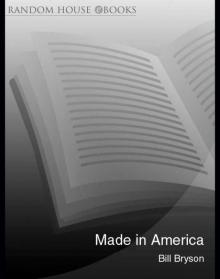 Made In America
Made In America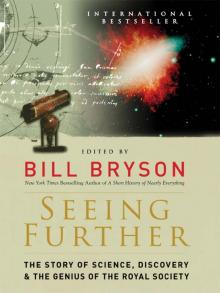 Seeing Further
Seeing Further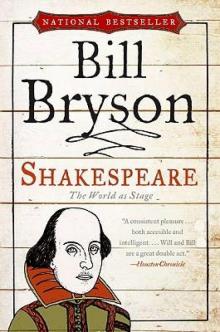 Shakespeare: The World as Stage
Shakespeare: The World as Stage The Life and Times of the Thunderbolt Kid
The Life and Times of the Thunderbolt Kid At Home
At Home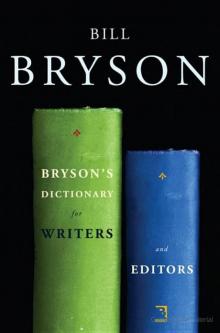 Bryson's Dictionary For Writers And Editors (v5.0)
Bryson's Dictionary For Writers And Editors (v5.0) Neither Here Nor There
Neither Here Nor There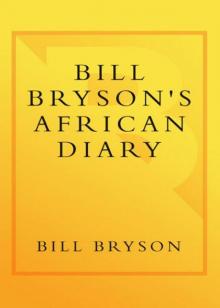 Bill Bryson's African Diary
Bill Bryson's African Diary